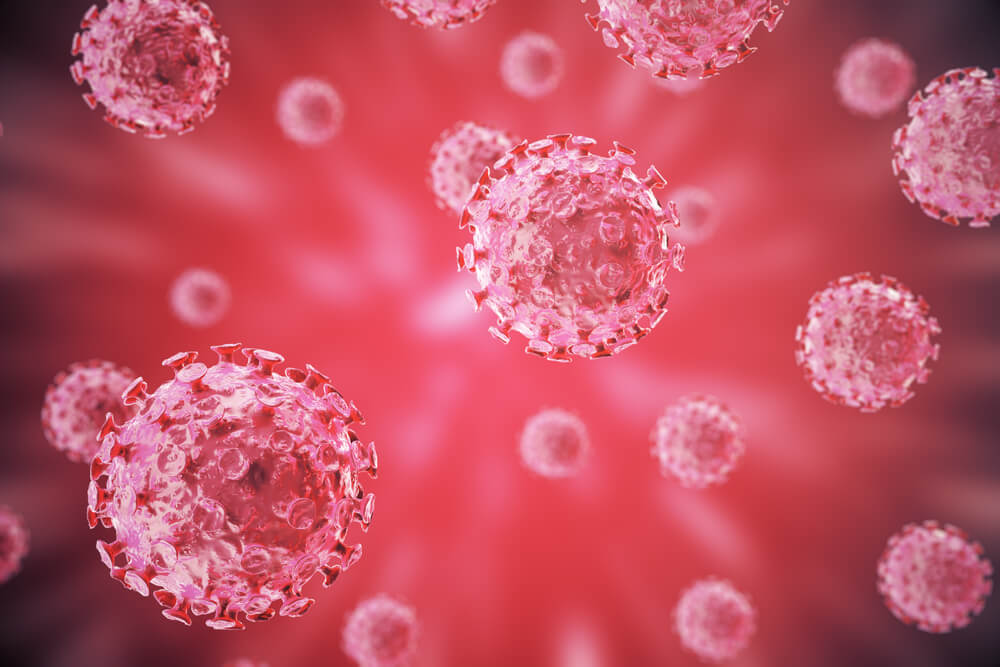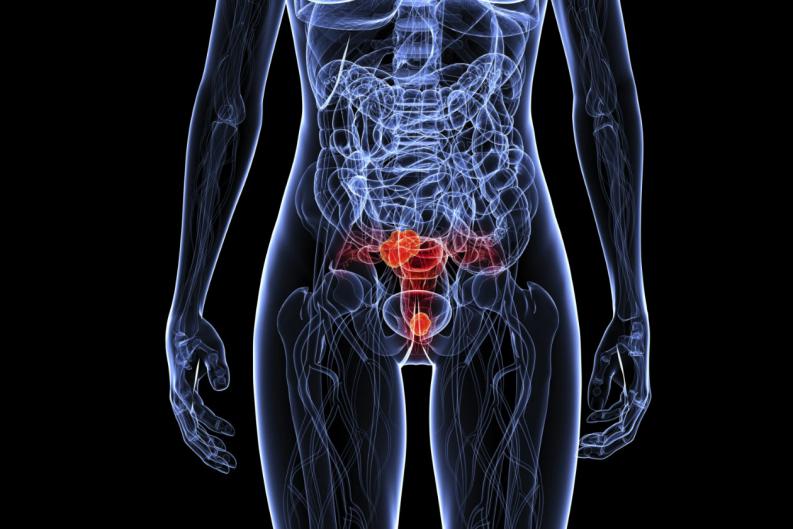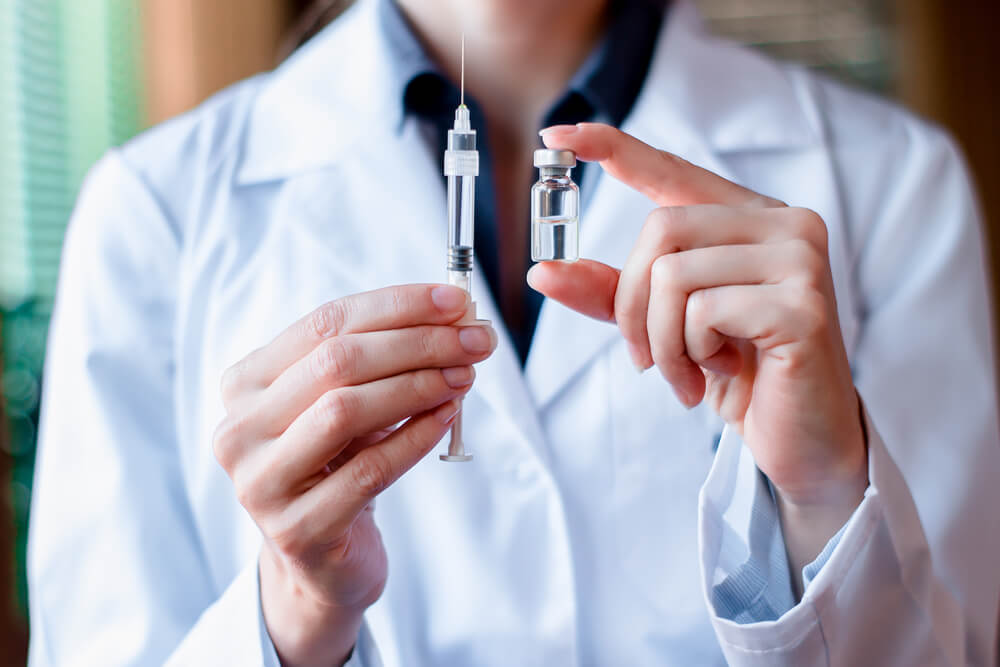Characteristics of Human Papillomavirus (HPV)

Human papillomavirus (HPV) is one of the most common sexually transmitted infections. It’s part of the papillomaviridae family, and anyone can contract it at any point during their sexually active life.
In the vast majority of cases, it’s harmless and asymptomatic, its long-term problems can be severe if not treated appropriately.
So, let’s take a closer look.
Types of human papillomavirus

There are more than 200 types of human papillomavirus. In addition, most of them are easily transmitted through direct sexual contact.
Since there are so many of them, it has been necessary to classify them according to their carcinogenic potential. Furthermore, according to the American Cancer Society, within this group, we find low-risk and high-risk HPV.
Low-risk HPV types do not cause cancer, while high-risk HPV types, such as HPV types 16 and 18, can cause cancer.
How could you contract it?
HPV is so common that most of the population will become infected over the course of their lifetime.
Warts appear on the fingers and palms, are frequent in children, and are typically associated with humid environments such as swimming pools, changing rooms, etc.
Almost all sexually active people will have contracted HPV at some point in their lives without even realizing it.
On the other hand, genital and oropharyngeal infections are transmitted mainly through sexual intercourse. In fact, the human papillomavirus is now considered the most common sexually transmitted infection.
Read more: Risk Factors for Mouth Cancer
HPV symptoms
According to experts at the Mayo Clinic, the main symptoms are as follows.

1. Cutaneous infections
When the skin tissue becomes infected by the human papillomavirus (HPV), it causes the appearance of warts. The area of the body in which they appear depends on the type of human papillomavirus that the person encounters.
They are grayish or dirty white in color, and you will often see black dots in the center of them. These little black dots are actually the active virus.
Common warts
They appear mainly on the fingers and palms, although they can also pop up on the elbows, knees, etc.
Common warts aren’t usually painful, but they are contagious through direct contact with the affected area. That’s why we should pay special attention to children who bite their nails or the skin around them. Human papillomavirus 2 and 7 are the ones responsible for causing these warts.
Plantar warts (“chicken eyes”)

These little warts appear on the soles of the feet, and possible to contract from swimming pools, showers, etc. Since they appear on the soles of the feet, which are responsible for supporting the whole weight of the body, they can be very painful. The culprits behind this type of symptom are human papillomaviruses 1, 2, 4, 27, and 57.
Mosaic warts
These begin with a set of fused warts, which are generally more superficial and less painful. They appear on the soles of the feet due to a human papillomavirus 3 infection.
Treeman syndrome (Epidermodysplasia verruciformis)
This one is actually a genetic anomaly, which results in the immune system of sufferers being unable to fight or control HPV infections.
The result is the appearance of a large number of colored lesions (macules) and lesions with a bulbous appearance (papules). These most commonly appear on the palms of the hands and the fingers and are the result of human papillomavirus 5 and 8 infections.
2. HPV: infections of the non-genital mucosa
Here the contagion is, in the majority of cases, sexual. In fact, some experts on the topic consider saying that the most common mode of transmission is specifically through oral sex.
Oral or pharyngeal papilloma
The human papillomavirus is also responsible for the appearance of lesions in the oral and pharyngeal mucosa. They are rough lesions, with the appearance of a blister and a dirty color.
There are certain types of viruses that are “high risk.” These are most likely to cause the onset of cancer. This symptom appears mainly at the back of the tongue, in the tonsils, or at the top of the throat.
3. Infections of the genital mucosa

In some cases, the HPV virus can cause the appearance of genital warts. Furthermore, these begin with types 6 and 11. While they may be very annoying, they are painless and have no risk of causing cancer.
The main problem lies in the high-risk strains of HPV: 16 and 18. However, although these are the two types that relate to cancer, in reality, there are up to a dozen of them.
Diagnosis
- Papanicolau test: this test helps the diagnosis of cervical cancer. It is vaginal cytology that detects precancerous cells, through laboratory analysis of a sample.
- Human papillomavirus test: this uses molecular biology techniques to detect the DNA of the virus. This test is used to determine whether or not a person has been infected by a high-risk strain of HPV.
Read about Five Types of Gynecological Cancers
HPV prevention

- Vaccination: Currently, most HPV vaccination campaigns target girls who are 12-13 years old. The vaccine protects against the higher-risk strains of the virus.
- Barrier methods of contraception: Male and female condoms, although they don’t provide 100% protection against this condition, can help prevent infection.
Treatment
So, if you’re looking to get rid of the symptoms, cryotherapy is one of the better treatments for warts and consists of applying liquid nitrogen to the lesions. Once you’ve undergone cryotherapy, it’s a good idea to cover the lesions with a patch or apply salicylic acid drops to them until they disappear completely.
Finally, according to Dr. Sheldon Morris, “warts on the external genitalia can be removed by a laser, by using an electric current (electrocautery), by freezing (cryotherapy), or by surgery.”
However, it’s essential to always consult the specialized physician first. Only they have sufficient authority to diagnose and prescribe what they deem appropriate to treat each patient.
All cited sources were thoroughly reviewed by our team to ensure their quality, reliability, currency, and validity. The bibliography of this article was considered reliable and of academic or scientific accuracy.
- Zaldívar, G., Martín- Molina, F., Sosa-Ferreyra, C. F., Ávila-Morales, J., Lloret-Rivas, M., Román-Lara, M., & Vega-Malagón, G. (2012). Cáncer cérvicouterino y virus del papiloma humano. Revista Chilena de Obstetricia y Ginecología, 77(4), 315–321. https://doi.org/10.4067/S0717-75262012000400014
- R, M. C. (2007). Diagnóstico y terapia del virus papiloma humano. Infectología Práctica, 209–214. https://doi.org/10.4067/S0716-10182007000300006
- Pérez M., C. H. (2016). Virus del papiloma humano. Repertorio de Medicina y Cirugía, 25(1), 1. https://doi.org/10.1016/j.reper.2016.02.002
- Clínica Mayo. https://www.mayoclinic.org/es-es/diseases-conditions/hpv-infection/symptoms-causes/syc-20351596
- American Cancer Society. https://www.cancer.org/es/cancer/causas-del-cancer/agentes-infecciosos/vph/vph-y-cancer.html
This text is provided for informational purposes only and does not replace consultation with a professional. If in doubt, consult your specialist.








